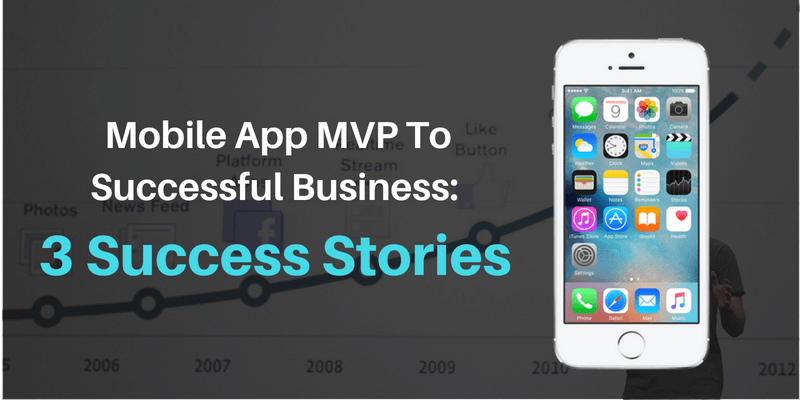It is needless to mention that the mobile app market is a hyper-competitive space that requires considerable upfront investment without any concrete assurances. But what’s even more challenging (or alluring) is the fact that it’s a winner who takes all market that offers significant first mover’s advantage. Now if you as a startup consider both these statements in parallel, you’d reach a conundrum- keeping the quality consistent, what should you optimize for- the costor the time?
Well, there is a way you can optimize both and it’s called Minimum Viable Product (MVP). While it’s been gaining much traction in recent years owing to the high flexibility and low cost, the concept has been around for quite a while. In fact, some of the largest tech juggernauts toady was born as an MVP. Let’s take three of the most notable names and trace their journey:
See More: How Much It Costs to Build an MVP?

While the evolution of Facebook from a simple website (that compared hot women) to the social media behemoth it is today is itself a fascinating case-study, the case of its mobile app isn’t any less insightful in terms of the value proposition of MVP for startups. Facebook was made publicly available in 2006, had a mobile website launched in 2007 and then it took 3 long years before it launched a mobile app- an app Facebook recalls as one of its biggest mistakes and offers a crucial lesson to startups.
Back in those days, none of the platforms including iOS, Android, Blackberry, or Symbian were mature-enough and there was a reasonable hope that they would eventually fuse to become one platform. Keeping that in mind, Facebook built a basic HTML-based application that worked on all platforms or as Zuckerberg confessed in an interview, crashed more than it worked. Later, as Android and iOS gained prominence, it launched another hybrid application that worked on both the platforms but wasn’t optimized for either. Finally, it was only in 2012 that the company embraced the native platform- i.e. 6 years after its launch! In the meanwhile, the service itself had introduced many new features and come a long way from the web-centric application it began with.

Instagram- the popular picture-based social media platform and now an arm of Facebook, took an exactly opposite approach from its beginning. Instead of opting for a cross-platform app to be able to serve a wide range of audience, Instagram built only a native iPhone app at first and remained an iOS exclusive for more than a year perfecting its user experience and performance.
And ever since the application made its Android debut, the number of users has skyrocketed and the application too has consistently added new features like video content, direct messaging, stories and more to ensure the growth.
Uber

Uber is today the most valuable startup in the world that operates across hundreds of cities with over a dozen custom services. But as you would expect, the application initially was nowhere near as sophisticated and feature-rich as it is today. It started out as a simple mobile app MVP in San Francisco to connect drivers to riders. That is, instead of a service provider- as it is seen today, it was merely an enabling platform at the time.
Then as the MVP gained users and offered feedback, the company started integrating them into subsequent releases and also expanded to new territories to validate its approach and gain new insights. Within years, the MVP had grown into a full-blown application with supplementary features like fare estimates, ride later, like tracking, among others. In fact, the application also added entirely new dimensions to the service based on local demands including the most famous UberX- where anyone can be an Uber drive in part-time, custom rides like motorbikes, autos, and even helicopters in some markets. Today, the application stands not merely as an enabling platform but is a whole bouquet of services with a range of payment solutions, ride features, custom transit solutions.
Closing Remarks
What these three applications reflect in their approach is no exception but rather the rule that the mobile app market follows these days. Even the mobile games are now initially launched with fewer features and levels, upon which they later build their story. The point here is that nobody builds a successful mobile app business in one stroke. If you want to manage both time and cost for your new app, the best way is to hire offshore developers who would quietly build your product while you focus on strategy. Indian app developers check all the right boxes in this regard in terms of their cost, expertise and mature offshore market.


